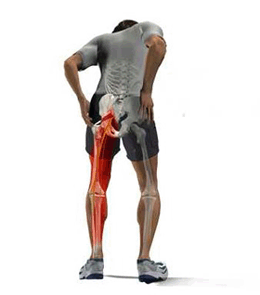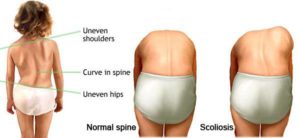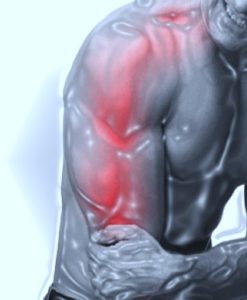- What are the causes of acute low back pain? Is that serious?
- Am I having a sciatica pain?
- What is scoliosis?
- Can heavy backpacks causes my child to have scoliosis?
- How do I check if my child having a scoliosis?
- I’m having frequent neck pain attacks. Whom shall I seek treatment?
- Pain along the arm and forearm. Is that the symptom of cervical prolapsed disc?
- Why is that back pain with fever, chills and night sweat need urgent attention?
- Why is that back pain with unexplained loss of weight and poor appetite need urgent attention?
- Why is that weakness and/or numbness of the limbs, urine and bowel incontinence need urgent attention?
Q: What are the causes of acute low back pain? Is that serious?
A: One of the most common causes of acute lower back pain is muscle strain. It usually follows after lifting a heavy object, heavy exercise, twisting or a sudden movement which cause injury to the muscles or ligaments. It usually resolves with rest and pain killer (anti-inflammatory).
Other possible causes of low back pain include:
- Herniated disc / slipped disc / prolapsed disc
- Degenerative disc disease
- Facet joint osteoarthritis
- Spondylolisthesis
- Spinal stenosis
- Ankylosing spondylitis
- Spine infection
- Spine tumour
Most of the causes of low back pain do not need urgent treatment but one should seek immediate medical attention if the back pain
- follows after a fall, accident or trauma
- associated with loss of weight and appetite
- associated with fever, chills or night sweat
- associated with bowel and/or urine incontinence
- associated with leg weakness and/or numbness
- getting worse despite rest and pain killer
Q: Am I having a sciatica pain?

A: Sciatica is the pain caused by irritation of the sciatic nerve or its nerve roots. It is most commonly caused by compression of the L4, L5 or S1 nerve root at the lumbar spine.
You may feel pain and/or numbness that travel from your buttock and down to one of your legs, foot and toes. You may also experience weakness of your leg muscles. This pain may be worse when you cough, sneeze or standing / walking for a long period of time. Generally the leg pain is more than the low back pain.
Q: What is scoliosis?
A: Scoliosis is a condition of spinal deformity with lateral curvature of more than 10°. It is often described as C-shape or S-shape spine. Most of the cases happen in adolescent and no cause is found (adolescent idiopathic scoliosis).
Q: Can heavy backpacks causes my child to have scoliosis?

A: No.
Idiopathic scoliosis has genetic predisposition (family history), however, it is not caused by carrying heavy objects like school bag, carrying bag on one side, inappropriate sitting/standing postures or sport activities, heavy backpack does, however, can make your child’s scoliosis worse.
Q: How do I check if my child having a scoliosis? (How do I identify if my child have scoliosis?)

A: Parents can easily screen their own children when suspecting of scoliosis by asking their child to bend his/her body forward with both knees kept straight (picture). Observe from the back of the child. If there is any asymmetry of the left and right side of the back, the screening is considered positive. The parents are advised to bring their child to see a spine surgeon if the screening test (Adam forward bending test) is positive.
Q: I’m having frequent neck pain attacks, whom shall I seek treatments from?
A: Similar to low back pain, muscle strain is the most common cause of neck pain as well. It usually happens after poor sleeping or sitting posture which cause micro-injury to the muscles or ligaments. It usually resolves with rest and pain killer (anti-inflammatory). You may see a general practitioner.
If your neck pain is persistent and getting worse despite rest and pain killer, you should see a spine surgeon to examine for other possible causes of neck pain.
If your neck pain is associated with radiation pain and/or numbness down to one of your arms/hands, you may also need to see a spine surgeon. This may signify cervical radiculopathy (nerve root irritation or compression at the cervical spine). The common causes are prolapsed disc and degenerative disc disease.
Other possible causes of neck pain include:
- Facet joint osteoarthritis
- Rheumatoid arthritis
- Spine infection
- Spine tumour
You should seek immediate treatment at Emergency Department if your neck pain
- follows after a fall, accident or trauma
- associated with loss of weight and appetite
- associated with fever, chills or night sweat
- associated with bowel and/or urine incontinence
- associated with hand weakness and/or numbness
Q: Pain along the arm and forearm. Is that the symptom of cervical prolapsed disc?
A: Maybe. Pain from the neck which travels to the arm and forearm is termed cervical radicular pain. The most common cause is prolapsed disc. However, other causes such as infection and tumour need to be ruled out. Rarely, brachial neuritis, herpes zoster, thoracic outlet syndrome and other peripheral neuropathy may also give rise to cervical radicular pain.
Pain that arises from shoulder and elbow joints may also mimic the presentation of cervical radicular pain. Conditions such as shoulder impingement syndrome, frozen shoulder and tennis elbow are often mistaken as cervical spine problem. These conditions can be differentiated by local tenderness at the joints (pain upon pressure by examiner) and diagnostic injection.
Q: Why is that back pain with fever, chills and night sweat need urgent attention?
A: When this happens, we need to urgently rule out any spine infection. Bacterial infection of the spine (pyogenic spondylodiscitis) tends to spread to the neural space (epidural abscess) leading to sudden paralysis.
Q: Why is that back pain with unexplained loss of weight and poor appetite need urgent attention?
A: Unexplained loss of weight and appetite are the possible symptoms of malignancy (cancer). One of the commonest sites of cancer spread (metastasis) is to the spine.
Q: Why is that weakness and/or numbness of the limbs, urine and bowel incontinence need urgent attention?
A: These are the symptoms of paralysis where the spinal cord or the cauda equina is compressed in any of the spinal pathologies like prolapsed disc, degenerative disc disease, infection, tumour, etc. Urgent surgical decompression might be needed to have a better prognosis of nerve recovery.

